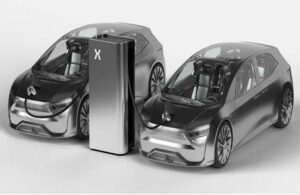Japanese automotive manufacturer, Suzuki Motor Corporation has joined hands with Battery energy storage system maker, Masahiro Ito, (PowerX), to start exploring business partnership opportunities in India and Japan.
 The partners say that both Japan and India face common challenges including realization of carbon neutrality through utilizing non-fossil fuel and renewable energy, as well as the improvement of energy self-sufficiency.
The partners say that both Japan and India face common challenges including realization of carbon neutrality through utilizing non-fossil fuel and renewable energy, as well as the improvement of energy self-sufficiency.
Both countries are in need of charging solutions to promote the adoption of electric vehicles in the coming years.
Suzuki and PowerX have agreed and signed a memorandum of understanding to explore the possibility of business partnership utilizing battery energy storage systems and ultrafast EV charger in India and Japan. Through this, they aim to contribute the realization of a carbon-neutral society by expanding the use of renewable energy and promoting the adoption of EVs.
PowerX manufactures, sells and provides services using its proprietary battery products for energy storage, ultrafast EV charging, home and marine applications. Additionally, the company is building its own GW scale battery plant in Okayama prefecture, Japan.
Suzuki will consider specific details of the collaboration to become a lifestyle infrastructure company that provides solutions based on a broad perspective of not only the products themselves but also the entire environment related to the products, including the infrastructure and systems where the solutions are applied.
The PowerX Charging Station uses its proprietary battery-integrated ultrafast EV chargers.
The hypercharger is said to enable EV users to charge with up to 240kW of power output using renewable energy.
The company says each charger is equipped with a 320 kWh storage battery and a high power output of up to 240 kW. The built-in storage battery can store electricity from renewable energy sources such as solar power and recharge EVs with the stored power.
Installation of the chargers is also quick and easy as no high-voltage contract nor complicated construction is needed – the charger can be charged simply by plugging it into a standard commercial 200V outlet.
Furthermore, the EV charger’s storage battery unit can be leveraged as an emergency power source in the event of a natural disaster or grid power failure.

